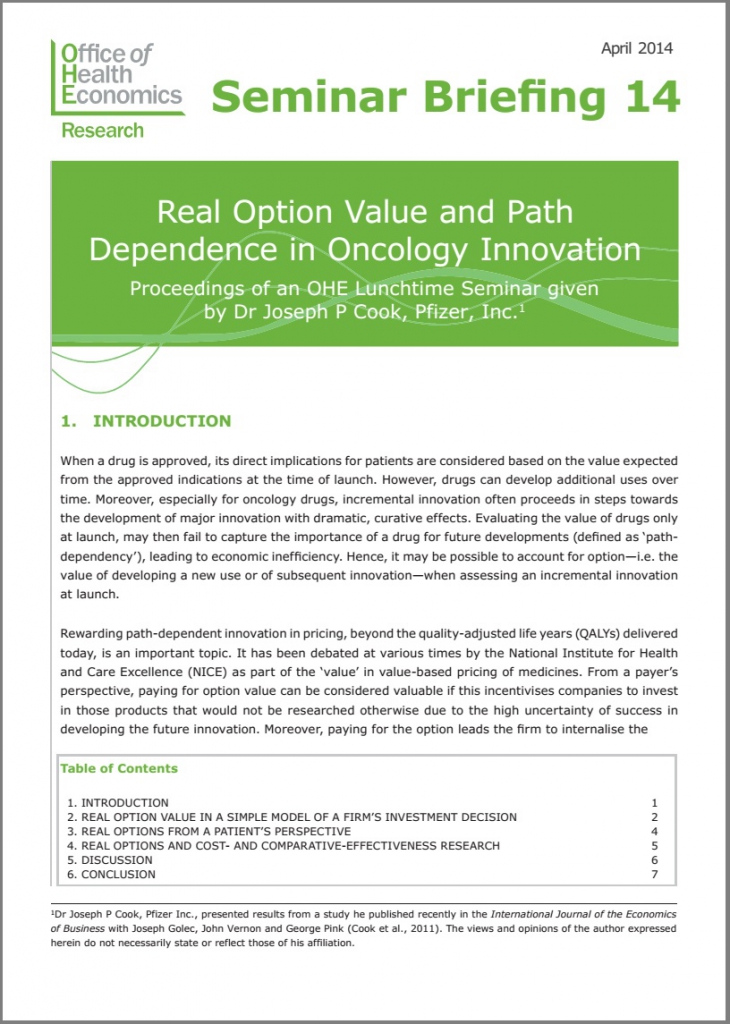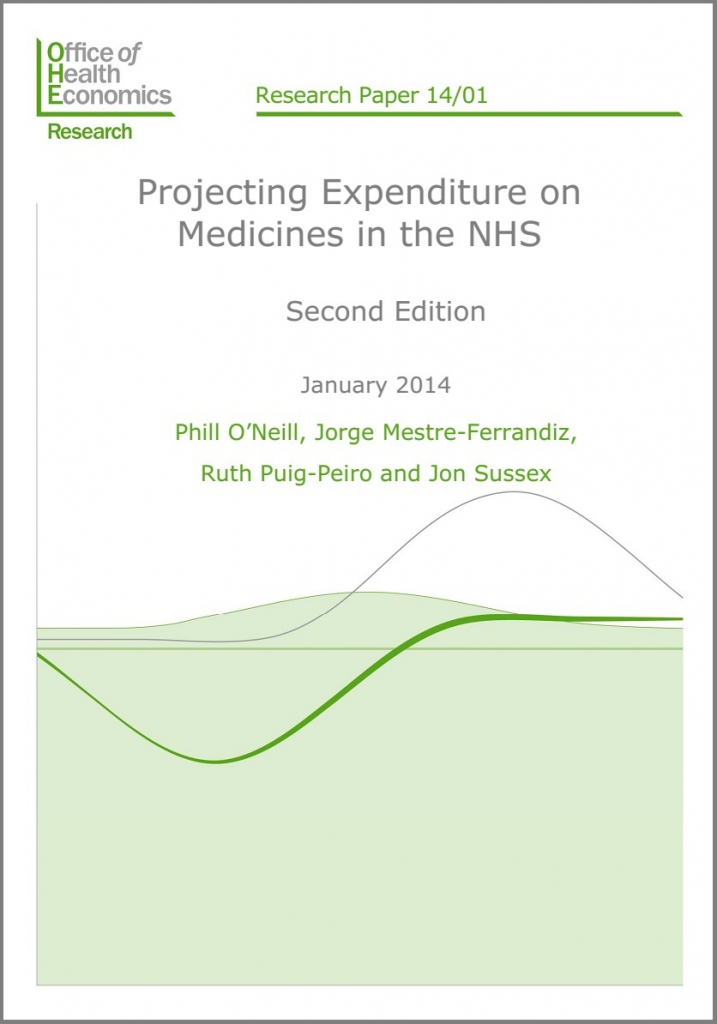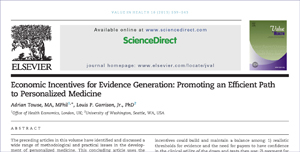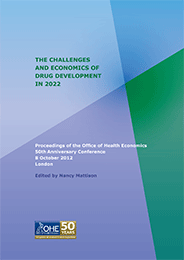Economics of Innovation
Optimal innovation balances willingness and ability to pay with the benefits of future R&D. Our wide-ranging programme aims to promote innovation in health care, increase our understanding of its value, and encourage R&D. New models of innovation should streamline development, reduce costs, and speed patient benefit.

Real Option Value and Path Dependence in Oncology Innovation
1 April 2014
Based on an OHE Lunchtime Seminar, this publication addresses a persistent issue: how to adequately reward innovation through the pricing of new medicines given the limitations…

Projecting Expenditure on Medicines in the NHS: Second Edition
1 January 2014
The Pharmaceutical Price Regulation Scheme (PPRS) 2014 Heads of Agreement, announced on 6 November 2013, outlines the terms of the five-year deal between the pharmaceuctical industry…

Personalised Medicine and the Value of Molecular Diagnostics: Case Studies
18 December 2013
Progress in personalised medicine is slower than some had expected, partly because of the science and partly because of insufficient economic incentives, particularly for investing in…

Using MCDA to Assess the Value of Treatments for Rare Diseases
5 December 2013
A pilot study demonstrated the value of involving a range of stakeholders in MCDA for rare disease therapies. According to a study just published by the…

Personalised Medicine: Economic Incentives for Evidence Generation
28 October 2013
Four types of economic incentives for drugs and diagnostics are essential to encouraging more rapid progress in personalised medicine. Adrian Towse, OHE’s Director, and Lou Garrison,…

Seminar Updates Project on Time Lags in Medical Research
8 October 2013
Progress on this important UK Medical Research Council project was discussed. A major challenge in biomedical and health research is ensuring that research findings are effectively…

OHE at iHEA: HTA in Emerging Markets, Personalised Medicine, EQ-5D mapping
6 August 2013
OHE was involved in several sessions at the 9th World Congress of the International Heath Economics Association (iHEA). Prof Adrian Towse, OHE’s Director, and Prof Lou…

OHE Involved in Developing New AMS Report on Stratified Medicines
15 July 2013
Professor Adrian Towse, OHE’s Director, joined Professor Sir John Bell and Professor Andrew Morris at the Science Media Centre last week to launch Realising the Potential…

Forecasting the Challenges and Economics of Drug Development in 2022
9 July 2013
A new publication from the Office of Health Economics captures the views of thought leaders from around the world about the scientific and economic climate for…